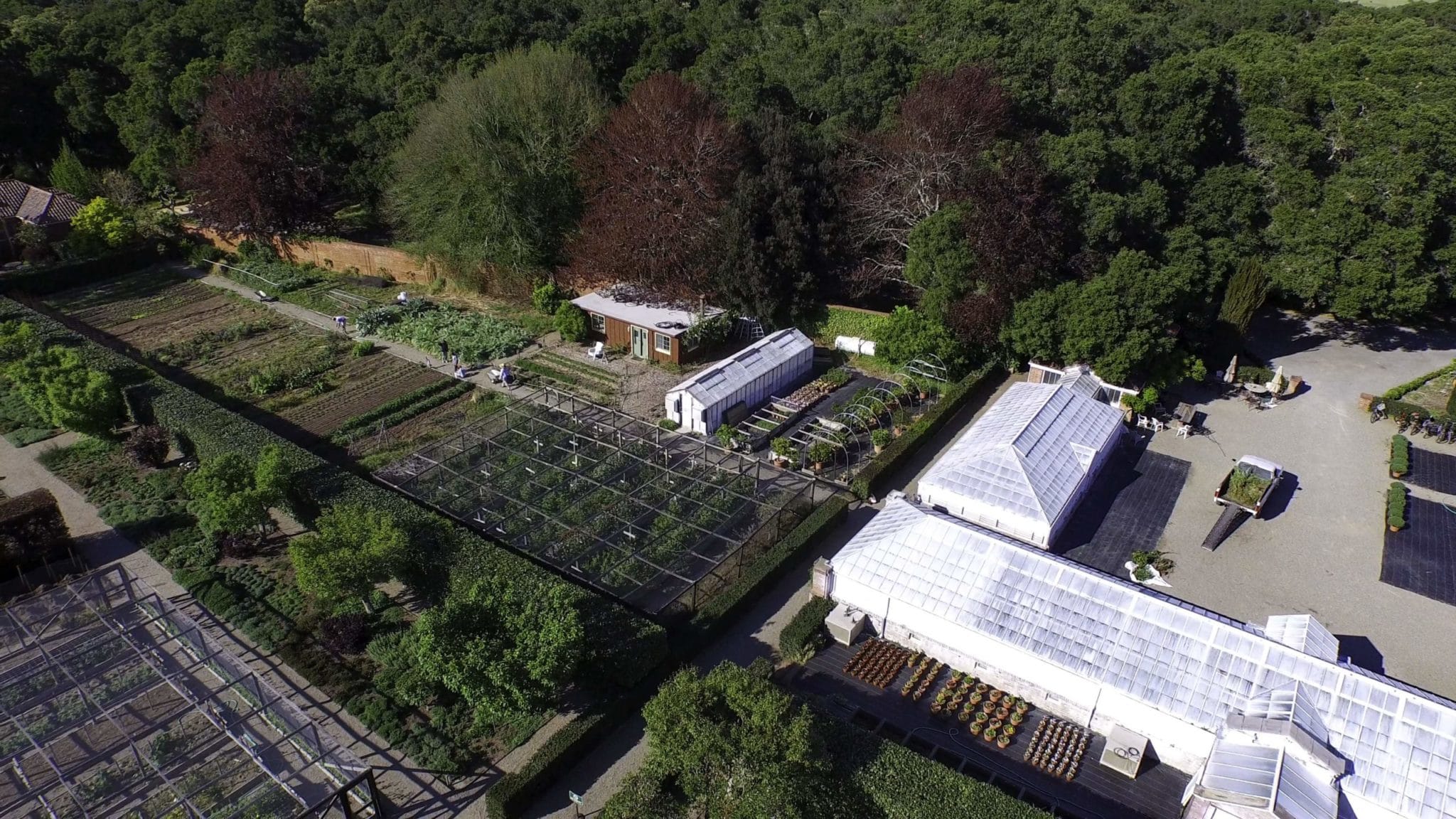Gardening For Victory

An uptick in seed sales. Plant nurseries classified as essential businesses. Instagram feeds full of picturesque window-sill herbs.
It seems this enforced shelter-in-place is inspiring a comeback of home gardening for many, harkening back to the era of victory gardens during World War I and II. Though we might not be facing the kind of drastic food shortages that originally necessitated the movement — sparse grocery store shelves and meat factory closures aside — people are turning to gardening to soothe anxiety, keep busy, and regain a tangible measure of control in a time when not a lot feels controllable.
This blog kicks off our Filoli “Gardening for Victory” series, which will offer tips, tricks, and encouragement to all you aspiring home gardeners. We’re starting today with a bit of background about the victory garden movement and Filoli’s history of food production!
History of Victory Gardens

Due to food scarcity during World War I, the American government encouraged civilians to grow their own produce in what were originally called “war gardens.” In 1917, billionaire and forester Charles Lathrop Pack initiated the movement by forming the U.S. National War Garden Commission, asking Americans to “sow the seeds of victory” by increasing food production. Propaganda posters, radio announcements, and pamphlets connected agricultural self-sufficiency with patriotism, assuring Americans that small daily actions could affect the country’s fate. The Bureau of Education even created the U.S. School Garden Army, recruiting youth as “soldiers of the soil” to lead the charge on the homefront.
These efforts paid off as Americans planted more than five million war gardens, producing $350 million worth of food in 1917 alone. That same year, the Bourns were completing the construction of the Filoli house. According to Filoli lore, they were influenced by the war garden movement, planning for two bell-shaped beds in the Walled Garden to be planted with vegetables. As part of our centennial celebrations, we commemorated this story by filling the Bell Beds — now typically used for formal displays — with cabbages, kale, and peppers to create a modern victory garden. You can read more about this project here.

After World War I’s end, war gardens were rebranded as the catchier “victory gardens,” and the movement proved enduring. It reemerged soon after the start of World War II, when food shortages arose partly due to the internment of Japanese-Americans — many were farmers who produced essential crops. Slogans like “Can All You Can,” “Dig On for Victory,” and “Our Food is Fighting” encouraged even first-time gardeners to give it a shot, with guidance from community garden clubs and schools.

In 1943, more than 20 million victory gardens took seed on the homefront, including one in front of San Francisco’s City Hall. A LIFE Magazine article that year marvelled that “every unprotected bit of ground was being dug up for victory gardens”; San Francisco alone boasted 700,000 of them! By the end of the year, the movement had produced 10 billion pounds of food nationally.
Food Production at Filoli
The World War I victory garden at Filoli was just the beginning of the estate’s experience with food production. William Bourn conceived Filoli as a self-sustaining estate, with agricultural fields, livestock, and orchards to offset costs. The Panel Garden, located in the southern part of the garden to take advantage of the best growing location, was designed to produce fruits, vegetables, and cut flowers. Filoli continues the tradition today, creating jams and fruit butter from the orchard and drying lavender and culinary herbs to sell at the Clock Tower Shop. We even have a staff vegetable garden!
If you are considering starting your own shelter-in-place victory garden, we’ve got some tips for you — look out for the next installment of “Gardening for Victory”!
